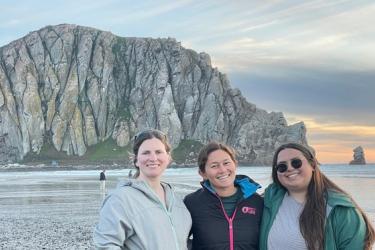When we do a fisheries acoustic survey, we use acoustic data from the echosounders to estimate the number of fish in an area. If the estimates are correct, they will lead to robust stock assessment models and management policies, and support a healthy fishing industry. But we need to have accurate acoustic data, which means we need to calibrate our system - particularly the part of our echosounders that change electrical pulses into sound waves to detect fish, also known as the transducers!
How do we do it?
Divers? Underwater robots?
No, we use lots and lots of fishing line, three big fishing reels, and a special 1½”-diameter sphere that we carefully lower into water and center under the face of the transducer, about 30 feet under the water on the ship’s centerboard. Easier than landing a spaceship on the moon, but still not an easy target. This sphere represents a single fish ‘target.’ It has a known reflectivity to sound, so as we move the sphere around the sound beam generated by the transducer, we can adjust the settings based on how much sound bounces back from the sphere to ensure we get correct readings when we start looking for actual fish targets.
This process can take a while but is fundamental to the survey's success. So we take our time and are very careful with every step, from measuring the amount of line out to interpreting the beam model results. Once the calibration is complete and we are happy with the results coming from our echosounders we can confidently embark on our survey, looking not for metal spheres in the water, but actual fish!




